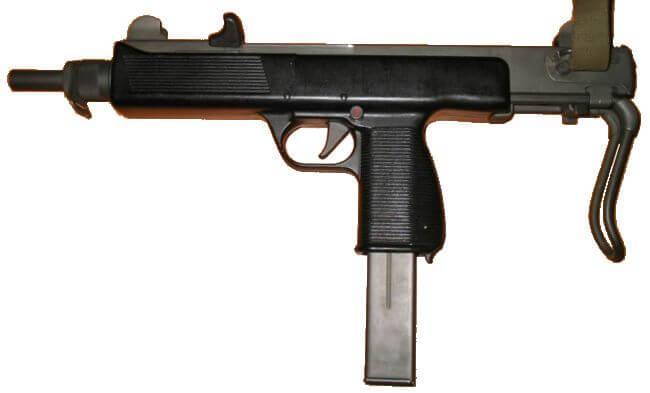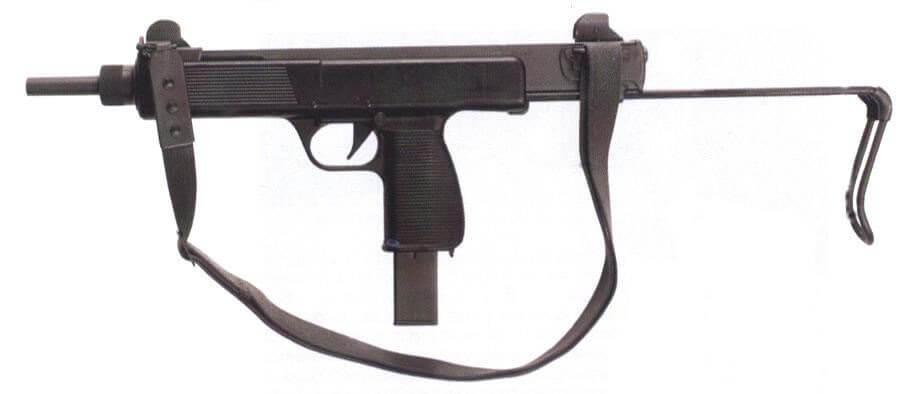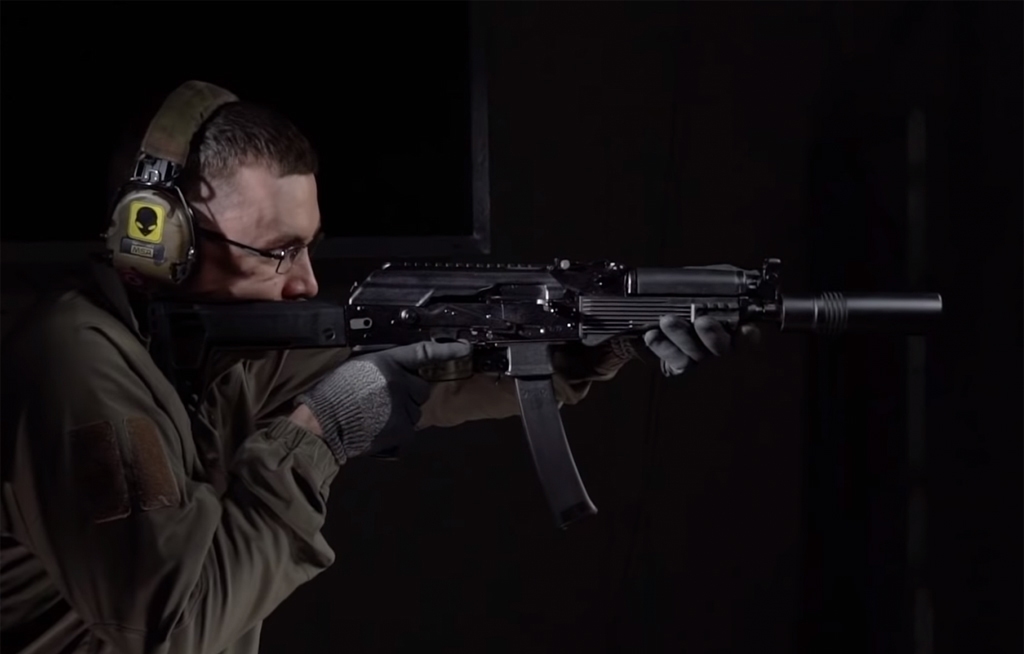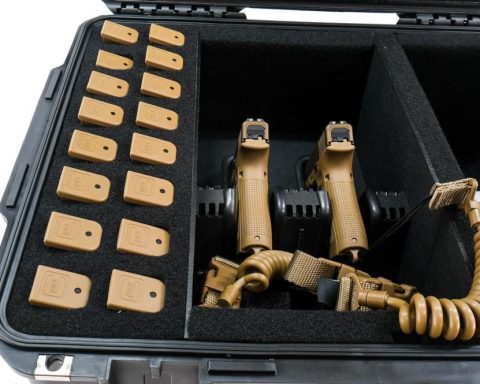The Steyr MPi 69 submachine gun resembles the UZI in some respects but is a totally different and relatively simpler design. It was used by a number of armies and police forces throughout Europe and the rest of the world. The Steyr MPi 69 was designed in the 1960s and produced from 1969 to 1990.
Design
The receiver is formed from bent and welded sheet steel and is carried in the frame unit, steel with a molded nylon covering. The magazine feeds in through the pistol grip, a convenient system in the dark, and the bolt is of the ‘wrap-around’ or ‘telescoped’ type in which the actual bolt face is well back within the bolt, and much of the bolt mass is in front of the breach at the moment of firing.
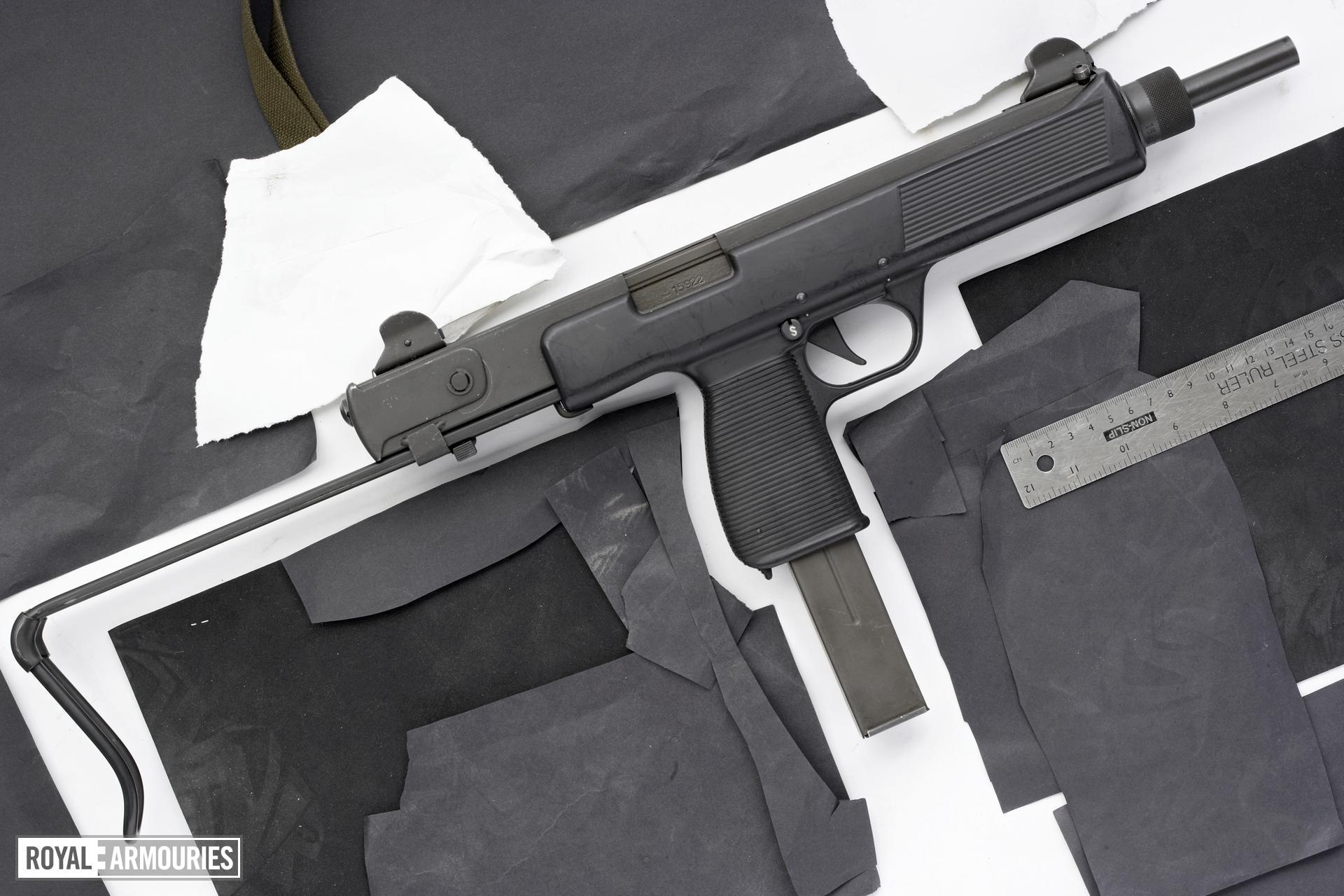
This system allows the maximum mass for the minimum bolt stroke and assists in producing a compact weapon. Cocking is performed by pulling on the carrying sling, which is attached, at the forward end, to the cocking knob. This, at first sight, is open to abuse, but a bracket, welded to the top of the receiver, ensures that the cocking action can only be performed when the sling is held at right-angles to the receiver, on the left-hand side. The normal pull from the top of the weapon, as when slinging it over the shoulder, cannot move the cocking-piece.
Safety and fire selector
There is a safety catch in the form of a cross-bolt above the trigger, which locks the trigger when set to safe; it is a three-position bolt; when pushed across to the right so that a white ‘S’ protrudes, it is safe; when pushed across to the left so that a red ‘F’ protrudes, it is set for automatic fire. There is also a halfway position in which single shots are possible. This safety catch is a weak piece of design since, except by memorizing, it is impossible to know what the state is in darkness; it would be better to have one end ribbed or knurled.
The third position is, in any case, superfluous; with the selector set for automatic fire, a light squeeze on the trigger fires a single shot, and this can be repeated as often as wanted. To fire bursts, a heavier squeeze is required. There is no need to reset the selector lever at all. I can only assume that the central position has been a safety feature during the initial training. An over-enthusiastic squeeze will not produce a runaway gun. This two-stage trigger is also found on the Steyr AUG rifle and takes some getting used to; I have found it a hindrance to accurate shooting in the automatic mode.
The Steyr MPi 69 is easy to strip and reassemble, taking no more than 15 seconds in either direction for a trained operator. Strictures on the safety and trigger apart, it is a well-designed, robust and straightforward weapon, and provided operators are trained to its peculiarities, a highly effective one.
Variants
The Steyr MPi 81 is a more modern, product-improved version of the Steyr MPi 69 introduced in 1981. It has a conventional cocking handle on the left side of the receiver and other minor improvements, including an increased firing rate of 700 rpm. A “Loop Hole” model meant to function as a port firing weapon was also made, fitted with an AUG optic and a longer barrel fitting for a firing port.
Technical specifications
| Country of origin: | Austria |
| Manufacturer: | Steyr-Daimler-Puch AG |
| Type: | Blowback, selective fire |
| Caliber: | 9mm Parabellum |
| Barrel: | 10.2 in (260mm) |
| Weight (empty): | 6.46 lbs (2.93kg) |
| Magazine capacity: | 25 or 32 rounds |
| Cyclic rate of fire: | 550 rounds/minute |

